An Expedition to Quality at Lantana
My healthcare IT journey began in 1988 when I accepted a clerical position in the Ambulatory Care department at St. Michael’s Hospital in Toronto, Canada. The department was implementing a new computerized Patient Registration system, which I learned relatively easily, and I was intrigued with the accuracy and efficiency of this new process. The new system allowed for more precise patient scheduling and the ability to view all outpatient clinic activity. I wanted to learn more, so I took classes on Computerized Business Systems and Programming at Ryerson University in the evenings, while working at the hospital in the daytime.
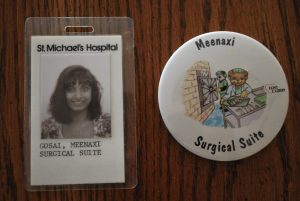
Surgical suite badge and button.
As I continued on my night-school path, I craved the opportunity to apply what I was learning in class. I took a position as an analyst as part of the team implementing a new scheduling and resource management system for the Perioperative Services Department. This role exposed me to clinical quality reporting for the first time. When I joined the team, staff had been entering all record tracking, from operating room bookings to inventory management manually, on paper. I set up and configured the electronic reports that compared wait times and cost between surgeons within the organization and across hospitals in the province. During the setup of the Surgical Suite inventory management module, I was responsible for the data dictionaries, so I suited up in scrubs, gloves, and masks to visit each operating room and recorded all instruments, bandages, solutions, etc. My most memorable moments were standing directly behind the anesthesiologist during a Coronary Artery Bypass Graft (CABG) surgery and winning the Halloween costume contest two years in a row, once as Cousin IT from the Addams Family and the other as the Riddler from Batman, and second place as the Cowboy from the Village People.
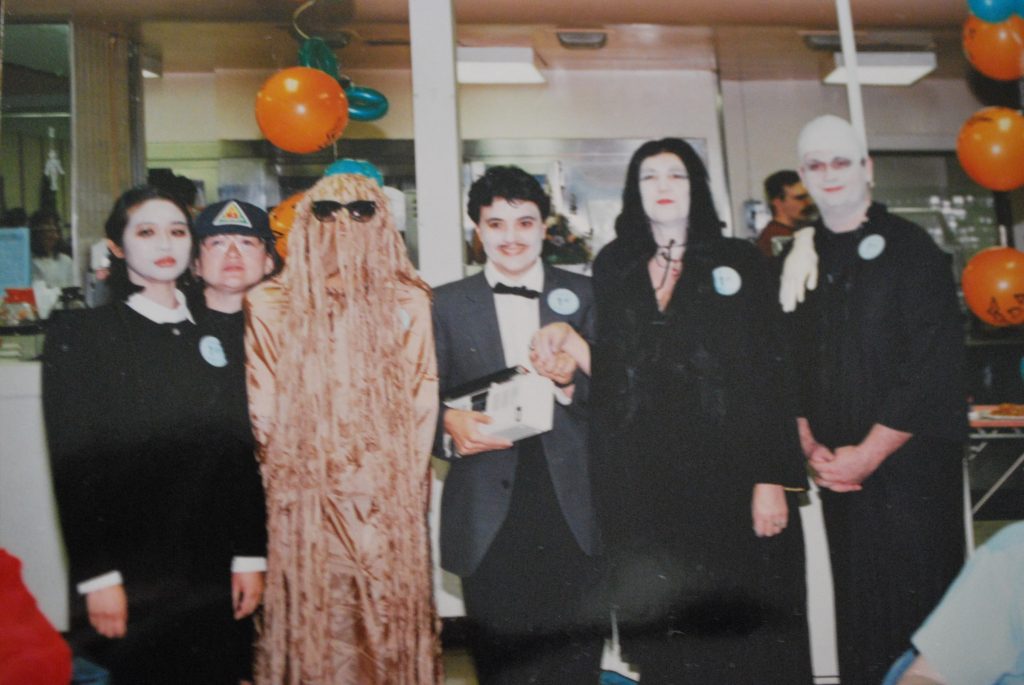
First place as Cousin It 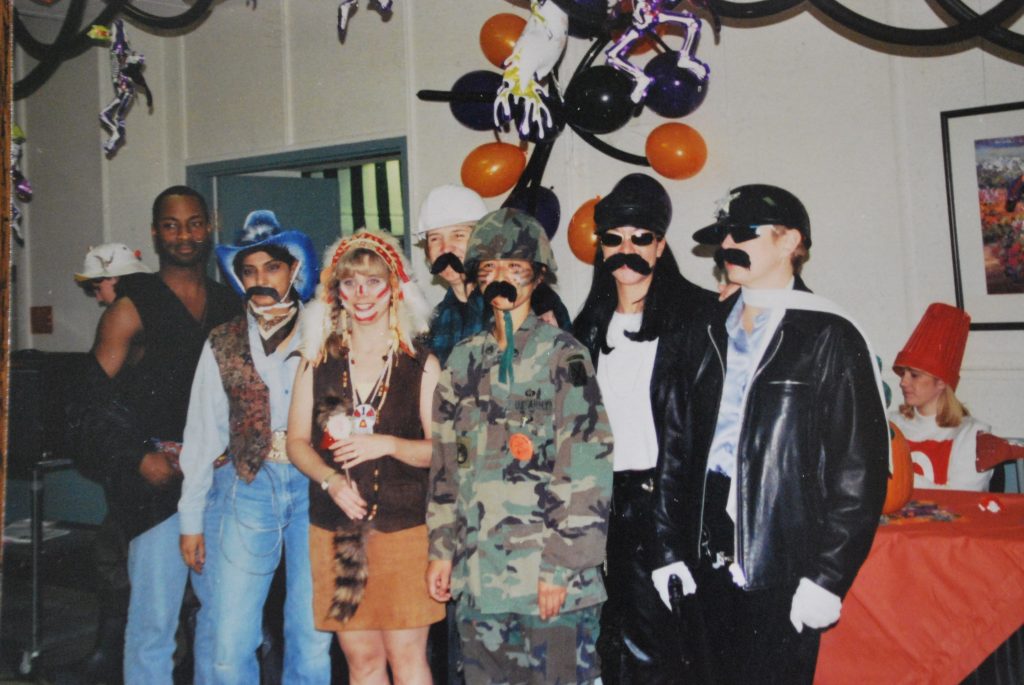
Second place as the Cowboy

First place as The Riddler 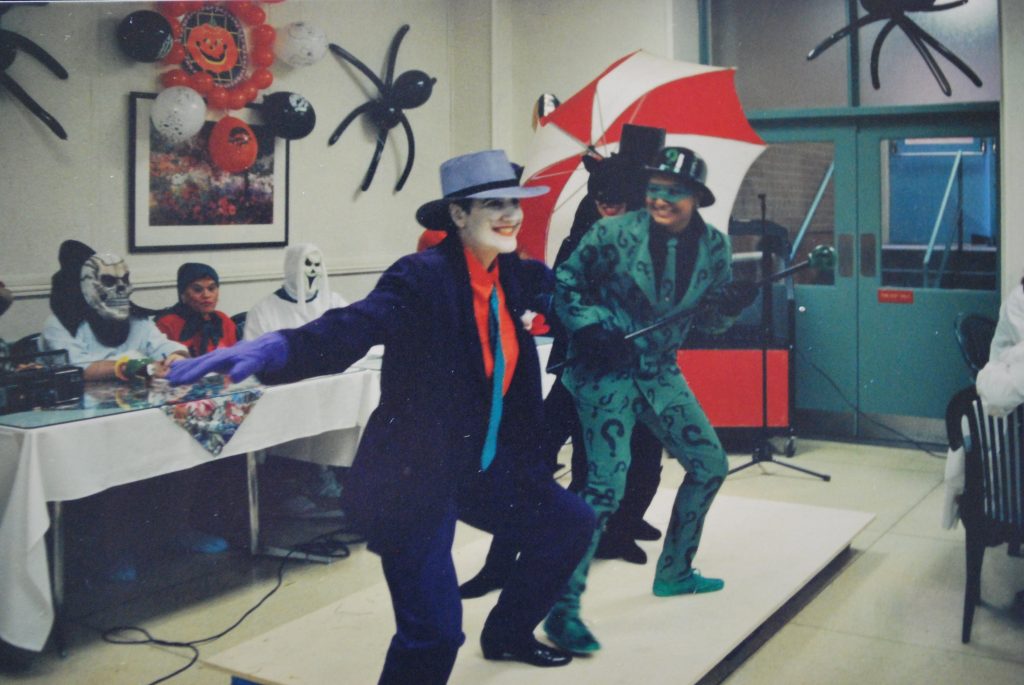
Upon successful implementation of the Perioperative Services system, I had my first experience working for a healthcare IT software vendor. Within the 8-person startup, I wore many hats, the most significant was coordinating the installation, including User Acceptance Testing, of a registration and billing system for community health centers across the province and northern territories. I performed system training to clients, primarily frontline administrative staff in the community health centers, and I traveled to health centers in St. Jacobs a small Mennonite community in Ontario, where the parking lots contain stalls for horse and carriages, and Yellowknife, Alaska, a breathtaking locale.
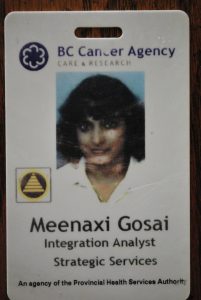
Integration analyst badge.
As I trekked on, I first encountered clinical information exchange while working as an Integration Analyst for a healthcare IT vendor specializing in interfacing healthcare systems, primarily for healthcare organizations within the United States. My Team Lead at the time said to me, “Learning the HL7 standard will get you far.” How right he was! I passed through two more healthcare IT software vendors’ doors, and I became proficient with HL7 messaging standards. This knowledge allowed me to understand the need for standardizing nomenclature, secure communication protocols, and quality assurance while creating and executing test cases to validate the accuracy of the interfaced data.
My travels, both personal and professional, took me to the North American West Coast where I was further exposed to the trials and tribulations of data integration between healthcare systems with within the engineering team; analyzing eCQM measure reported data as part of the Value Incentives and Quality Reporting Centre (VIQRC) team; verifying Centers for Medicare & Medicaid Services (CMS) performance measures for the Hospital Compare website; developing and validating eCQM Quality measures and related test cases; and reviewing healthcare standards to develop and update business requirements, test measure specifications, and create user documentation.
I feel both humbled and privileged to journey alongside peers who are as committed to quality improvement as I am. I am proud to be part of an organization that invests so much time and resources to maintain the very high standard of quality assurance we have achieved.
